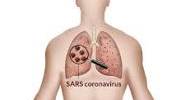The COVID-19 disaster highlights the world’s inability to recognize and respond to developing infectious illnesses. The COVID-19 pandemic has revealed previously unnoticed flaws in the world’s infectious-disease surveillance and response capabilities—flaws that have remained despite the evident harm they caused during previous outbreaks. Many countries, including ones regarded to have strong response capabilities, failed to detect or respond decisively to SARS-CoV-2 outbreaks in their early stages.
Researchers are urging immediate investment in the prevention of a deadly new disease that claims the lives of tens of thousands of people each year. A global systematic review informs on the occurrence of a variety of significant consequences as well as a very high risk of death in patients with non-typhoidal Salmonella invasive illness.
A global systematic review led by Professor John Crump of the University of Otago and Dr. Christian Marchello of the Centre for International Health, and published today in the Lancet Infectious Diseases journal, reports on the frequency of a variety of serious complications and a very high risk of death among patients with non-typhoidal Salmonella invasive disease.
Non-typhoidal Salmonella invasive illness is a new, underserved infectious disease that primarily affects young children and immunocompromised people in Sub-Saharan Africa. It affects about 500,000 individuals each year and is fatal in 15% of cases, resulting in around 77,500 deaths worldwide each year.
According to our findings, a variety of highly dangerous sequelae are common among non-typhoidal Salmonella invasive illness patients, and the disease has a 15% fatality rate. When we compare this case-fatality ratio to 0.2% for malaria and 2% for typhoid fever, we can see how lethal non-typhoidal Salmonella invasive disease is and why we need to do more to prevent transmission
Professor Crump.
Professor Crump, Dr. Marchello, and Dr. Megan Birkhold of the University of Maryland School of Medicine researched the complications and mortality associated with the condition on behalf of the global Vacc-iNTS Consortium. The Consortium, which includes 12 partners from eight countries, including Burkina Faso, Ghana, Kenya, and Malawi, intends to progress the clinical development of a new vaccine to combat the dangerous and frequently fatal virus.
“Despite being a significant dangerous bacterial disease in Sub-Saharan African nations, non-typhoidal Salmonella invasive disease is not commonly known or appreciated, and disease burden estimates need to be improved,” Professor Crump says.
Non-typhoidal Salmonella is best known in high-income nations, such as New Zealand, as a cause of food poisoning, from which patients normally recover without treatment.
“Young children and immunocompromised people in Sub-Saharan Africa are infected in the bowel but do not frequently have diarrhoea. Instead, as a result of concomitant health issues such as starvation, malaria, HIV, and other unknown causes, many people develop blood poisoning or sepsis, which often results in death.”

The Vacc-iNTS Consortium is working on phase 1 trials of a potential vaccine, but it needs global support, financing, and awareness.
“According to our findings, a variety of highly dangerous sequelae are common among non-typhoidal Salmonella invasive illness patients, and the disease has a 15% fatality rate. When we compare this case-fatality ratio to 0.2% for malaria and 2% for typhoid fever, we can see how lethal non-typhoidal Salmonella invasive disease is and why we need to do more to prevent transmission” According to Professor Crump.
Covid-19’s devastation is still being felt around the world, and a wider health crisis is brewing. For much of the last 18 months, the virus has held entire healthcare systems captive. People are still afraid of going to the hospital.
Global efforts to control and eradicate other infectious illnesses, such as malaria, tuberculosis (TB), and HIV, have been hampered, with fatal results. Last year, these three diseases claimed the lives of around 2.5 million people.
The study refines the disease’s burden and justifies vaccine development efforts. “We must redouble our efforts to develop and test vaccinations to avert this dreadful disease.” Equally crucial is the need for more non-vaccine preventive studies.
“We need to understand how the bacteria that cause this are transferred so that we can stop it using non-vaccine methods. For example, are the majority of people exposed by contaminated water or food, in which case improvements in water or food safety through greater sanitation could help to avoid infection? Is the main reservoir in humans or animals, in other words, do we need to control both human and animal feces to prevent this?”
The business case for improving the world’s pandemic response capabilities at the global, national, and local levels is compelling. The economic disruption produced by the COVID-19 pandemic might cost more than $16 trillion, which is many times the estimated cost of averting future pandemics.
















